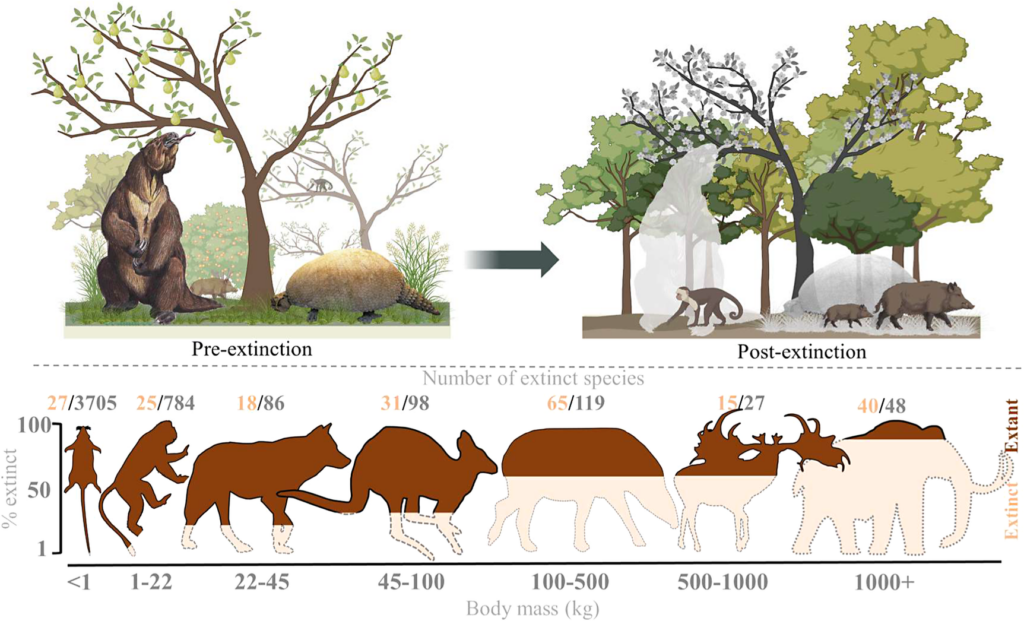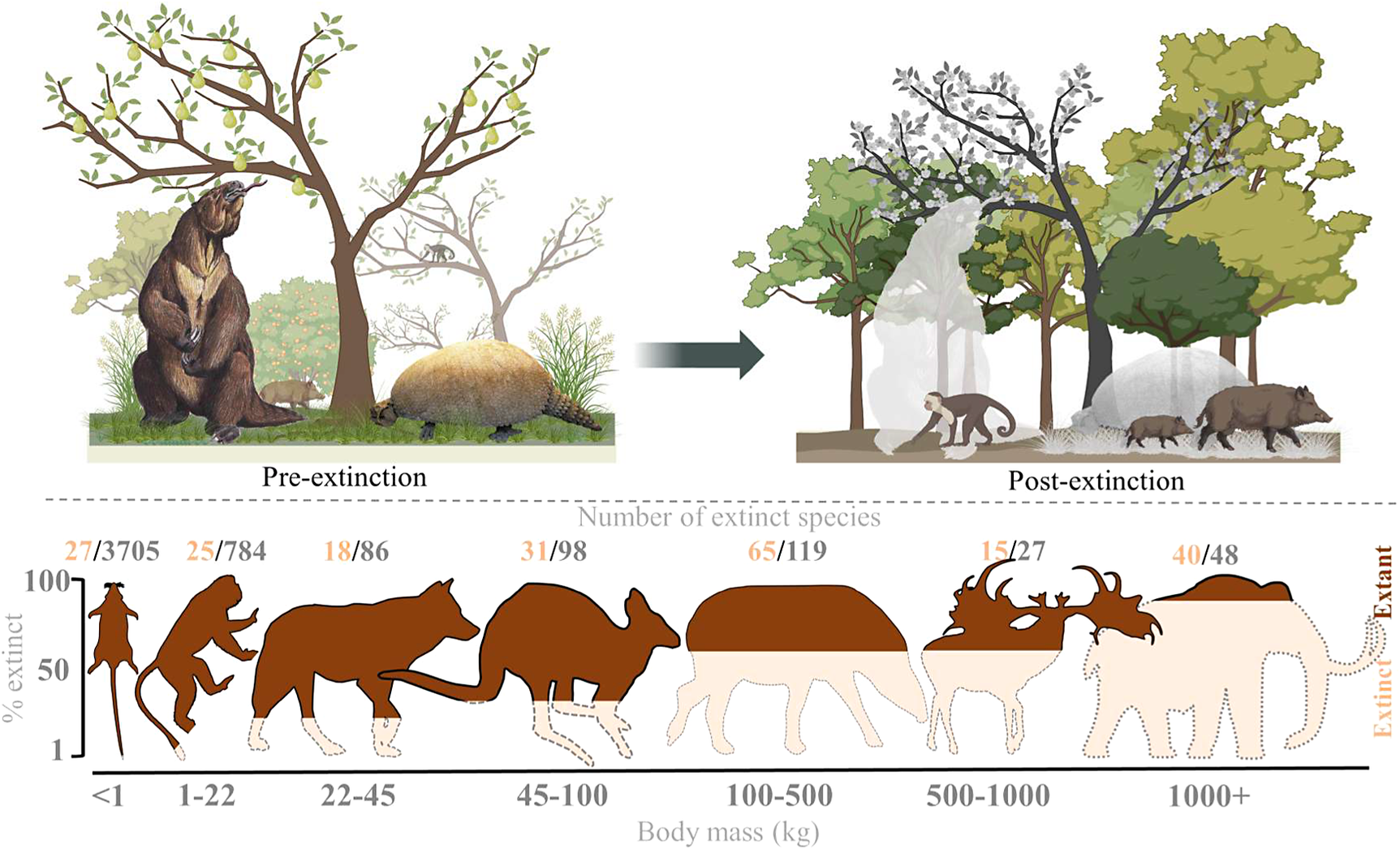Continues after advertising
In the intricate tapestry of life on Earth, evolution and extinction are two sides of the same coin, interwoven in a continuous dance that shapes the biodiversity of our planet. From the humble beginnings of single-celled organisms to the complex ecosystems we see today, the process of evolution has driven the adaptation and diversification of species. Yet, extinction looms as a natural counterpart, an inevitable force that clears the path for new life forms to emerge. This duality raises a profound question: can the end of a species indeed herald a new beginning? 🤔
As we navigate through this exploration, it is essential to acknowledge the pivotal contributions of luminaries like Charles Darwin, whose theory of natural selection laid the foundation for our understanding of evolutionary processes. Similarly, the works of paleontologists such as Stephen Jay Gould have illuminated the patterns of extinction and survival, offering insights into the dynamic nature of life. These intellectual giants have shaped our comprehension of how life evolves and how extinction serves as a catalyst for innovation in the natural world.
Continues after advertising
This article invites you to delve into the fascinating interplay between evolution and extinction, examining how the disappearance of species can pave the way for adaptive radiations and new ecological opportunities. Are we witnessing a mere end, or does each extinction event trigger a ripple effect that propels evolutionary progress? Such inquiries not only pique scientific curiosity but also have profound implications for how we perceive conservation and biodiversity management today.
With a professional and authoritative lens, I aim to present a comprehensive overview of the mechanisms driving these phenomena, supported by meticulous research and scientific evidence. As we journey through this narrative, you will gain insights into the resilience and adaptability inherent in nature, underscoring the remarkable capacity of life to reinvent itself amidst adversity.
Continues after advertising
In an era where human activity accelerates both evolutionary changes and extinction rates, understanding this delicate balance becomes more crucial than ever. Join me in unraveling the complex dynamics at play, and discover how the end of species may not merely signify loss, but also the dawn of new beginnings in the ever-evolving saga of life on Earth. 🌍
Evolution and Extinction: The End of Species as a New Beginning
The relationship between evolution and extinction is a fascinating interplay that has shaped the history of life on Earth. It raises questions about the resilience of nature and how the end of one species can pave the way for the emergence of new forms of life. This natural cycle has been a constant force in shaping biodiversity, even though it often involves dramatic shifts in the ecosystem.
The Dance of Evolution and Extinction
Evolution is the process by which species adapt over generations through natural selection. It allows organisms to survive and thrive in changing environments. However, not all species can keep up with these changes, leading to extinction, which is the disappearance of a species from Earth. This process might seem tragic, but it is also an opportunity for new life to flourish.

How Do Extinctions Occur?
- Natural Disasters: Events like volcanic eruptions, earthquakes, or tsunamis can drastically alter habitats.
- Climate Change: Long-term changes in climate can make environments inhospitable for certain species.
- Human Activity: Deforestation, pollution, and overhunting are significant contributors to recent extinctions.
Each of these factors can drastically alter ecosystems, making it challenging for species to survive. Yet, they also open niches in the environment, allowing other species to adapt and evolve.
Extinction as a Catalyst for Evolution
Though extinction might seem like an end, it can be the beginning of something new. After a mass extinction event, such as the one that wiped out the dinosaurs, the world saw a burst of evolutionary activity. Mammals, which were once small and nocturnal, began to diversify and occupy niches left vacant by dinosaurs.
Why Does Evolution Accelerate After Extinctions?
- Available Niches: With fewer competitors, species have the chance to exploit new resources.
- Rapid Adaptation: Environmental pressures can drive fast evolutionary changes, leading to the emergence of new species.
- Genetic Variation: The genetic diversity within surviving species can lead to novel traits and adaptations.
These factors can accelerate the pace of evolution, leading to the development of entirely new species and ecosystems.
The Role of Humans in Modern Extinctions
Humans play a significant role in the current wave of extinctions, often referred to as the “sixth mass extinction.” Our actions have profoundly impacted biodiversity, from habitat destruction to climate change. Yet, humans also have the power to protect and conserve the species that remain.
What Can We Do to Mitigate Our Impact?
- Conservation Efforts: Establishing protected areas and wildlife reserves helps preserve habitats.
- Sustainable Practices: Reducing our ecological footprint through sustainable agriculture and industry.
- Restoration Projects: Reintroducing native species and restoring natural habitats.
By taking these steps, we can help mitigate our impact on the planet and support the natural cycle of evolution and extinction.
Frequently Asked Questions
Q: Can extinct species ever return?
A: While extinct species cannot return in their original form, de-extinction technology aims to bring back certain species through genetic engineering. However, this is a complex and controversial field.
Q: How many species go extinct each year?
A: Estimates vary, but scientists believe that dozens to hundreds of species go extinct every day due to human activities, which is a rate far higher than natural background extinctions.
Q: Are humans at risk of extinction?
A: While humans are highly adaptable, our survival depends on maintaining healthy ecosystems. Environmental degradation poses significant risks, but proactive measures can help ensure our continued existence.
Understanding the intricate dance between evolution and extinction offers a deeper appreciation for the resilience of life on Earth. It reminds us that while species may disappear, life itself continues to adapt and thrive in new and unexpected ways. 🌿
Conclusion
As we reach the conclusion of our exploration into “Evolution and Extinction: The End of Species as a New Beginning,” it is imperative to recognize the profound implications of these phenomena on our understanding of the natural world. Evolution and extinction are not isolated events but are intertwined processes that have continually reshaped life on Earth. They serve as crucial mechanisms for biodiversity and adaptation, demonstrating the resilience and dynamism inherent in biological systems. The extinction of species, while often perceived as a negative outcome, paves the way for new forms of life, fostering an ongoing cycle of renewal and transformation.
In the broader context, these processes challenge us to reconsider our role as stewards of the environment. As human activities increasingly influence the rate and direction of these natural processes, it becomes our responsibility to mitigate adverse impacts and promote sustainability. The lessons learned from the past, observed through the lens of evolutionary biology and paleontology, equip us with the knowledge to foster a more harmonious coexistence with the myriad forms of life that share our planet.
As we conclude, let us reflect on the following: How can we, as a society, harness our understanding of evolution and extinction to innovate solutions that preserve biodiversity for future generations? 🤔 Your engagement and curiosity drive the ongoing dialogue and exploration necessary for sustainable progress. Thank you for dedicating your time to this important topic, and we hope it has inspired you to think critically about the natural world and our place within it. 🌿
For further reading and to continue the conversation, consider exploring additional resources and sharing your thoughts with our community. Your insights are invaluable in shaping a future where evolution and extinction are understood as integral components of life’s rich tapestry.

